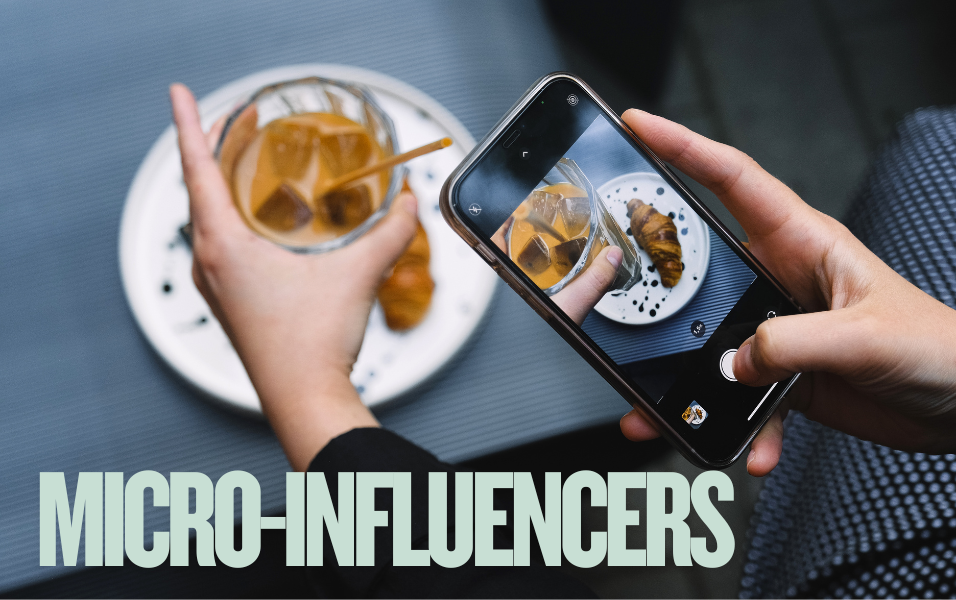Forget the flashy stuff—authenticity is what matters most. This explains the increasing popularity of micro-influencers and why brands of all sizes are investing in them.
For small business owners, micro-influencers offer a cost-effective way to reach highly engaged audiences without breaking the bank. And unlike celebrity influencers, they bring a genuine, community-driven spirit that resonates deeply with niche markets.
Why Micro-Influencers Are Gaining Traction
Micro-influencers—generally defined as creators with 1,000 to 100,000 followers—often get higher engagement rates than mega-influencers. Their smaller audiences create a sense of close-knit communities, making every like, comment, or share more impactful.
Engagement over reach:
- Higher comment-to-follower ratios: Audiences of micro-influencers comment up to ten times more per post.
- Deeper trust: Followers view these influencers as friends rather than distant icons.
- Authentic storytelling: Product mentions feel like genuine recommendations, not paid endorsements.
Micro-influencers are better at converting interest into actual results, which means small businesses get a better return on investment (ROI).
The Shift from Reach to Relevance
Brands are moving away from vanity metrics like raw follower counts and embracing contextual alignment. The focus is on the quality of viewers, not just the quantity.
Key considerations for campaign strategy:
- Audience overlap: Is the influencer’s audience a good match for the people you want to reach?
- Content style match: Will their creative voice reflect your brand values?
- Platform compatibility: Do they excel on popular platforms like Instagram, TikTok, and LinkedIn? Or are there new channels your audience enjoys?
Prioritizing relevance allows small business owners to connect with a pre-engaged community through partnerships, instead of relying on a large audience to take notice.
Challenges and Opportunities for Brands
Managing several micro-influencers can be tricky due to tasks like negotiating contracts, creating tailored content briefs, and organizing when posts go live. However, these complexities also open the door for richer, more detailed storytelling.
For example, a small business owner in the beauty industry could partner with several micro-influencers on Instagram to promote a new skincare line. By selecting influencers with engaged followers who are interested in skincare, the business can ensure a higher level of engagement and purchasing behaviour. Managing multiple influencers may require more coordination, but it also enables the exploration of diverse storytelling perspectives that appeal to different types of people watching.
What This Means for the Future of Influence
Micro-influencers are helping to even the playing field when it comes to brand partnerships. Everyday creators such as bloggers, local experts, and niche hobbyists are emerging as key players, reshaping the influencer economy into a more community-focused environment.
As a result, small businesses can now reach very specific groups of people. In turn, this helps them build loyal, long-term support instead of just hoping for a quick viral hit.
Looking ahead, expect to see:
- Micro-influencer collectives pooling resources for co-created campaigns
- Subscription-style ambassador programs that reward ongoing engagement
- Data-driven matchmaking platforms pairing brands with creators based on real-time audience insights
Conclusion
Micro-influencers aren’t just a passing trend: they’re a powerful strategy for small businesses seeking authentic engagement, targeted reach, and higher returns on investment. From negotiating multiple partnerships to measuring meaningful KPIs, the shift from mega-celebrity endorsements to niche credibility demands a thoughtful approach.
The online world is always changing, but MYOB can help you keep up. We offer customized solutions for your social media, content, and strategy to make your brand stronger. If you’d like to learn more, let’s chat!

